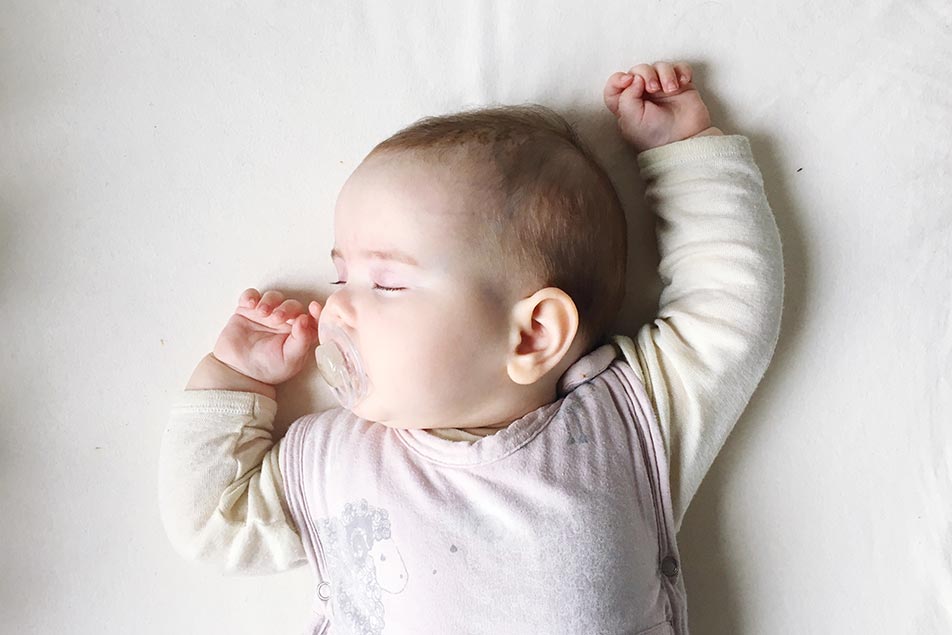
This post was written by Erin Norton, director of community outreach, Parkview Women’s & Children’s Hospital.
In our community and throughout the United States, about 10 babies die each and every day from unsafe sleep. Tragically, these deaths and other injuries resulting from unsafe sleep are largely preventable.
Unsafe sleep environments can result in poor outcomes that may not cause death but are harmful, such as infant falls. Bed sharing, or sharing a sleep surface with baby, is one of the primary culprits.
Recommendations for safe sleep
About 20 years ago, recommendations for parents to follow the ABCs of Safe Sleep first emerged. Initially, there was a significant decrease in the number of sleep-related deaths but since that drop, rates have remained stubbornly persistent. Data shows that infants who sleep Alone, on their Backs and in a Crib are safest.
The American Academy of Pediatrics (AAP) continues to review new research and make updates to their recommendations. The most recent update was released earlier this year. While the recommendations are straightforward, following them is not always easy and they may not feel intuitive.
Many parents, for example, have bed shared with their infants, whether intentionally or unintentionally. The AAP specifically noted this in their policy statement: “The AAP understands and respects that many parents choose to routinely bed share for a variety of reasons, including the facilitation of breastfeeding, cultural preferences, and belief that it is better and safer for their infant. However, based on the evidence, we are unable to recommend bed sharing under any circumstances.”
Instead of bed sharing, the AAP recommends having the infant sleep in the caregiver’s room, but in a safety-approved crib, bassinet or portable crib. Sometimes parents, even those who want to follow the recommendations, struggle with implementation. Knowing what to do simply isn’t enough; to be effective, recommendations need to be followed. Here are some strategies for caregivers to consider.
1. Make a plan. As a new parent, you are going to be exhausted and things will not always go the way you think they will. If you consider possible contingencies, such as what you’ll do when you’re really tired or when you’re travelling, you’ll be more likely to be successful.
2. Tag team. Two-parent families can take turns getting up with baby. If one parent will be up at night breastfeeding, the other parent can relieve their partner and allow for more rest during the day. For one-parent families, recruit responsible friends and family who can allow for daytime rest.
3. Avoid impairment. Caregivers who are impaired due to some prescription medications, alcohol or illicit drugs can become drowsy or not be alert enough to return baby to his or her crib. Avoid substances and ask your doctor about side effects of any new medication.
4. Don’t smoke. Maternal smoking during pregnancy and caregivers who smoke, even if they don’t smoke in bed, are risk factors. There has never been a better time to quit smoking.
5. Use technology. If you’re concerned that you may fall asleep with baby, set a timer on your phone to go off every couple of minutes.
6. Spread the word. Every caregiver should know about safe sleep. Make sure you inform grandparents, childcare providers and siblings – everyone who cares for baby.
7. Ice water. If you’re breastfeeding or comforting baby in the middle of the night, sip on ice cold water to help keep you from dozing off.
8. Change location. If you’re trying to avoid falling asleep with baby, it makes sense to get out of bed. Be cautious on where you go, though. Recliner chairs and couches are just as dangerous, if not more so, as a bed if you would accidentally fall asleep. A wooden chair or the floor may be a better option.
9. Remove soft items. If you’re caring for baby in bed and worry you might fall asleep, remove pillows and soft bedding from the area. Being a little less comfortable might help keep you awake. Soft bedding is also a risk factor for infant suffocation.
Being a new parent is a hard job. Practicing safe sleep is hard, especially when you’re exhausted. Learn about safe sleep, teach all of your baby’s caregivers, and make a commitment to follow the recommendations. Think of strategies and plan ahead so that you’re prepared when the fatigue sets in. Safe sleep is not always easy, but it is always worth it.



